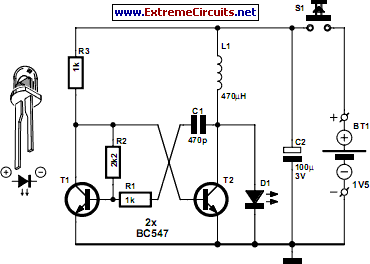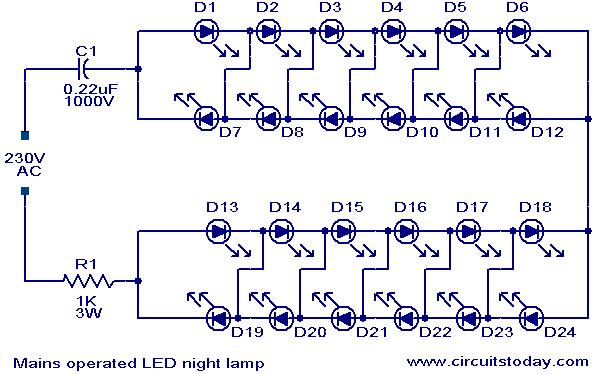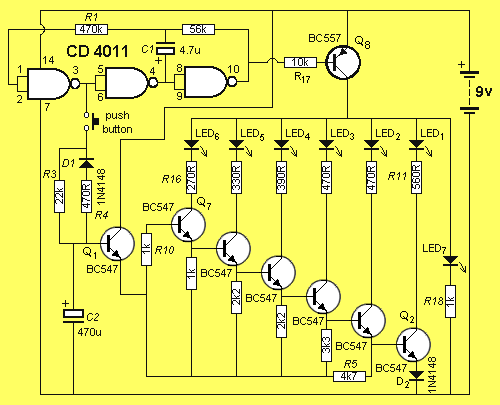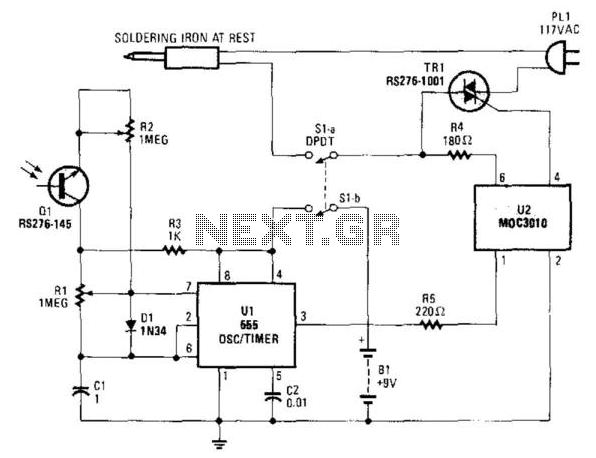
LED Phototherapy Unit

It is widely believed that light can be beneficial for human skin and mental well-being. Light at specific wavelengths may also help alleviate depression and allergies. Numerous products are available on the market, priced from a few tens of pounds to around a hundred pounds, marketed as universal solutions for dust allergies or hay fever. A closer examination of these devices reveals that their operation is relatively straightforward. All these devices emit intense red light at a wavelength of 660 nm. Some biophysicists assert that light of this wavelength can positively influence the human body and stimulate healing processes. This treatment, known as phototherapy, is claimed to mitigate allergic reactions in the body by combating free oxygen radicals and enhancing the immune system, thereby reducing mucous membrane inflammation. As this treatment utilizes visible light rather than medication, there is no associated risk of side effects. Scientific studies indicate that while this therapy may not be universally effective, success rates of up to 72% have been reported. Given that access to these devices may not be feasible through the NHS or private medical insurance, interest in do-it-yourself solutions arises. For the enclosure, an old nasal hair trimmer has been selected. These devices can be purchased new for a few pounds or repurposed from existing items. The choice of enclosure also influences the battery selection, as the unit accommodates an AA-size cell. Consequently, the circuit must be compact, fitting within the limited space of the enclosure, and capable of driving a high-brightness red LED at voltages ranging from 1V to approximately 1.6V. A suitable circuit can be adapted from a Mini Project by Burkhard Kainka, which was designed to drive a white LED, published in Elektor Electronics in June 2002. In this circuit, the inductive voltage pulse is limited by the LED itself, ensuring that the output voltage aligns with the forward voltage of the LED. The circuit is appropriate for driving a high-brightness 660 nm red LED, facilitating the creation of a DIY phototherapy unit. Due to the minimal number of components, assembly can be accomplished by directly soldering them together or using a small piece of stripboard. The circuit is compatible with a wide range of voltages, allowing for the use of either an alkaline AA cell or an AA-size NiMH rechargeable cell with a voltage of 1.2V. The circuit consumes approximately 20 mA of current. If assembled correctly, the red LED should illuminate brightly upon power application. A daily usage of five to ten minutes in each nostril is recommended to achieve noticeable benefits after two weeks of treatment.
The schematic for this DIY phototherapy unit consists of several key components: the high-brightness red LED, a suitable power supply (AA alkaline or NiMH rechargeable cell), and the driving circuit adapted from the previous project. The LED operates at a forward voltage of approximately 2V, and the circuit must be designed to ensure that the LED receives the necessary current without exceeding its maximum rating.
The driving circuit can be constructed using a simple transistor switch or a dedicated driver IC that regulates the current through the LED. The use of a resistor in series with the LED is also essential to limit the current and protect the LED from damage. The circuit should include a capacitor to smooth out any voltage fluctuations, ensuring stable operation.
The compact design of the circuit allows it to fit neatly within the enclosure of the nasal hair trimmer, utilizing the existing battery holder. Proper thermal management should be considered, as high-brightness LEDs can generate heat during operation. Adequate spacing and ventilation should be incorporated into the design to prevent overheating.
Overall, this DIY phototherapy unit offers a practical and cost-effective solution for individuals seeking light-based therapy for allergies and other conditions, leveraging the principles of phototherapy while utilizing readily available components and materials.It is widely thought that light can be therapeutic for the human skin and soul. Light at the correct wavelength may also be effective against depression and allergies. There is a wide range of products on the market, at prices from a few tens of pounds to a hundred pounds or so, which are presented as universal remedies for dust allergies or hay f ever. If we look at these devices in more detail, we find that their operation is relatively simple to explain. Common to all the devices is that they emit intense red light with a wavelength of 660 nm. Some biophysicists claim that light of this wavelength can have a positive effect on the human body and can initiate healing processes.
This so-called phototherapy` is a treatment which is claimed to have an effect against allergic reactions in the body, since it acts against free oxygen radicals and strengthens the immune system, reducing inflammation of the mucous membrane. Since this treatment does not take the form of a medicine, but rather the form of visible light, there is no risk of side-effects.
There has been scientific research showing that this therapy does not work in every case, but success rates as high as 72 % have been reported. Since it may not be possible to obtain these devices under the NHS or under private medical insurance, our thoughts naturally turn to do-it-yourself.
For the enclosure we decided to use an old nasal hair trimmer. These can be obtained new for a few pounds, or you may have an old one that can be recycled. The choice of enclosure also dictates the choice of battery: the unit contains a holder for an AA-size cell. The circuit must therefore not only be very compact (there is little spare room in the enclosure), it must also be able to drive a high-brightness red LED from a voltage between 1 V and around 1.
6 V. Here again we can indulge in a little recycling: we can re-use the circuit from a Mini Project by Burkhard Kainka for driving a white LED, published in Elektor Electronics in June 2002. In this circuit the inductive voltage pulse is limited by the LED itself, ensuring that the output voltage will automatically match the forward voltage of the LED.
The circuit is suitable as it stands for driving a high-brightness 660 nm red LED to make a do-it-yourself phototherapy unit. In view of the small number of components, the circuit can be assembled by soldering them together directly or by using a small piece of stripboard.
The circuit can operate from a wide range of voltages, and so we can use either an alkaline AA cell or an AA-size NiMH rechargeable cell with a voltage of 1. 2 V. The current consumption of the circuit is about 20 mA. Assuming the circuit has been built correctly, the red LED should light brightly as soon as power is applied.
Five to ten minutes` use in each nostril every day should be sufficient to obtain noticeable benefit after two weeks of treatment. 🔗 External reference
The schematic for this DIY phototherapy unit consists of several key components: the high-brightness red LED, a suitable power supply (AA alkaline or NiMH rechargeable cell), and the driving circuit adapted from the previous project. The LED operates at a forward voltage of approximately 2V, and the circuit must be designed to ensure that the LED receives the necessary current without exceeding its maximum rating.
The driving circuit can be constructed using a simple transistor switch or a dedicated driver IC that regulates the current through the LED. The use of a resistor in series with the LED is also essential to limit the current and protect the LED from damage. The circuit should include a capacitor to smooth out any voltage fluctuations, ensuring stable operation.
The compact design of the circuit allows it to fit neatly within the enclosure of the nasal hair trimmer, utilizing the existing battery holder. Proper thermal management should be considered, as high-brightness LEDs can generate heat during operation. Adequate spacing and ventilation should be incorporated into the design to prevent overheating.
Overall, this DIY phototherapy unit offers a practical and cost-effective solution for individuals seeking light-based therapy for allergies and other conditions, leveraging the principles of phototherapy while utilizing readily available components and materials.It is widely thought that light can be therapeutic for the human skin and soul. Light at the correct wavelength may also be effective against depression and allergies. There is a wide range of products on the market, at prices from a few tens of pounds to a hundred pounds or so, which are presented as universal remedies for dust allergies or hay f ever. If we look at these devices in more detail, we find that their operation is relatively simple to explain. Common to all the devices is that they emit intense red light with a wavelength of 660 nm. Some biophysicists claim that light of this wavelength can have a positive effect on the human body and can initiate healing processes.
This so-called phototherapy` is a treatment which is claimed to have an effect against allergic reactions in the body, since it acts against free oxygen radicals and strengthens the immune system, reducing inflammation of the mucous membrane. Since this treatment does not take the form of a medicine, but rather the form of visible light, there is no risk of side-effects.
There has been scientific research showing that this therapy does not work in every case, but success rates as high as 72 % have been reported. Since it may not be possible to obtain these devices under the NHS or under private medical insurance, our thoughts naturally turn to do-it-yourself.
For the enclosure we decided to use an old nasal hair trimmer. These can be obtained new for a few pounds, or you may have an old one that can be recycled. The choice of enclosure also dictates the choice of battery: the unit contains a holder for an AA-size cell. The circuit must therefore not only be very compact (there is little spare room in the enclosure), it must also be able to drive a high-brightness red LED from a voltage between 1 V and around 1.
6 V. Here again we can indulge in a little recycling: we can re-use the circuit from a Mini Project by Burkhard Kainka for driving a white LED, published in Elektor Electronics in June 2002. In this circuit the inductive voltage pulse is limited by the LED itself, ensuring that the output voltage will automatically match the forward voltage of the LED.
The circuit is suitable as it stands for driving a high-brightness 660 nm red LED to make a do-it-yourself phototherapy unit. In view of the small number of components, the circuit can be assembled by soldering them together directly or by using a small piece of stripboard.
The circuit can operate from a wide range of voltages, and so we can use either an alkaline AA cell or an AA-size NiMH rechargeable cell with a voltage of 1. 2 V. The current consumption of the circuit is about 20 mA. Assuming the circuit has been built correctly, the red LED should light brightly as soon as power is applied.
Five to ten minutes` use in each nostril every day should be sufficient to obtain noticeable benefit after two weeks of treatment. 🔗 External reference





